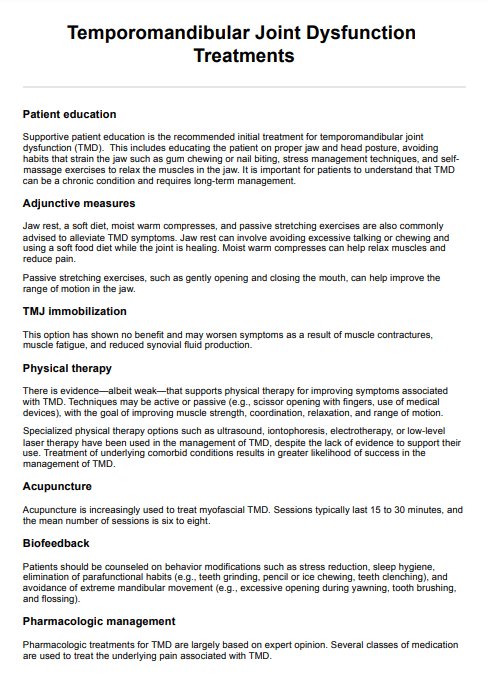The length of treatment for TMJ disorder varies but typically spans several weeks to months, depending on the severity and response to therapy.

Temporomandibular Joint Dysfunction Treatments
Discover effective treatments for TMJ dysfunction, including medications, therapy, and lifestyle adjustments to manage pain and improve jaw mobility.
Use Template
Temporomandibular Joint Dysfunction Treatments Template
Commonly asked questions
If TMJ disorder is not treated, it can lead to worsening jaw pain, increased joint damage, and difficulties with eating and speaking due to the decreased function of the jaw.
The best treatment for TMJ disorder often involves a combination of physical therapy, dental splints, medications to relieve chronic pain and inflammation, and lifestyle changes to reduce jaw strain. In severe cases, surgical interventions may be necessary.
EHR and practice management software
Get started for free
*No credit card required
Free
$0/usd
Unlimited clients
Telehealth
1GB of storage
Client portal text
Automated billing and online payments











